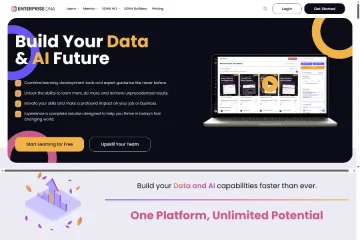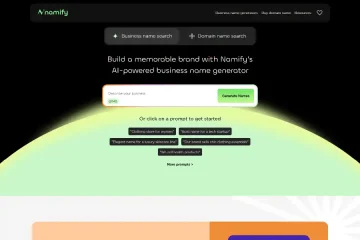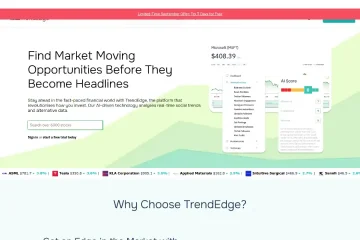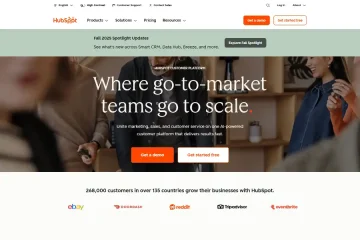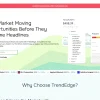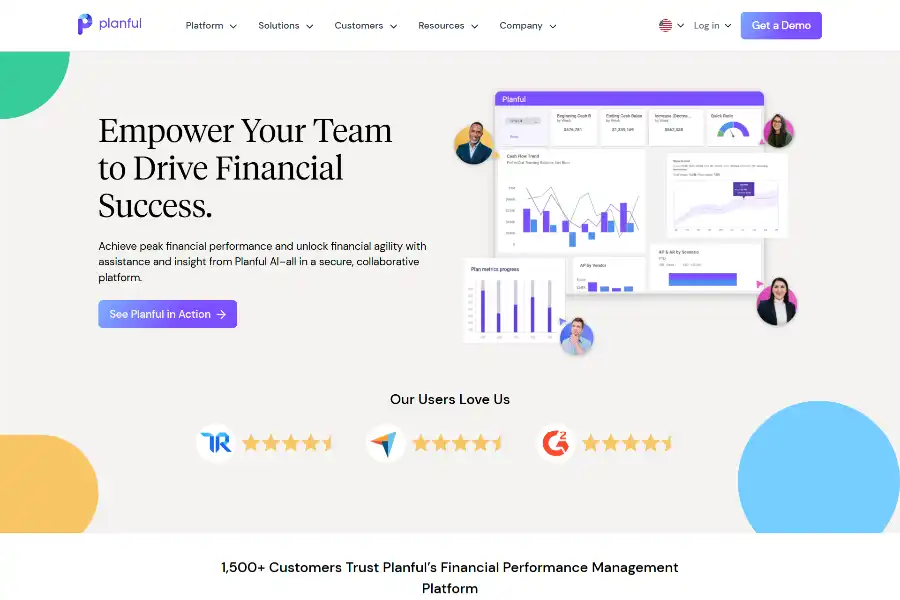
Planful: A Comprehensive Deep-Dive into the AI-Enabled Financial Performance Management Platform
Introduction: What Planful Brings to the Table
Planful is a cloud-native Financial Performance Management (FPM) platform purpose-built to replace spreadsheets and fragmented legacy systems with a single, continuously connected workspace for planning, consolidation, reporting, and analysis. By embedding AI and machine learning into every step of the financial workflow—from data ingestion to variance commentary—Planful promises to slash close-cycle times, surface hidden cost savings, and empower finance teams to guide strategy in real time. The vendor’s positioning is succinct: “eliminate waste, provide better insights, change direction faster.” This article unpacks the technology, features, customer proof points, and competitive dynamics that make Planful one of the fastest-growing solutions in the modern FPM landscape.
Technical Architecture: An AI-First, Cloud-Native Core
Cloud & Elastic Compute
Planful runs on Amazon Web Services (AWS) using a multi-tenant micro-services architecture. Kubernetes-orchestrated containers enable horizontal scaling during peak close or budget season while maintaining SOC-2 Type II security controls and GDPR compliance. A columnar in-memory engine—internally codenamed “Pulse”—delivers sub-second response times for ad-hoc models exceeding 500 million data cells.
Data Fabric & APIs
The platform offers more than 200 pre-built connectors (ERP, HRIS, CRM, and flat files) plus a REST and GraphQL API layer that supports event-driven data refresh via webhooks. This creates a low-latency “data fabric” so that operational changes in Salesforce or NetSuite are reflected in Planful dashboards within minutes, not hours.
Embedded AI Layer
Planful Predict is the umbrella term for the platform’s AI services. It leverages gradient-boosted decision trees for anomaly detection, Bayesian structural time-series models for forecasting, and transformer-based language models to auto-generate variance commentary. The AI layer runs inside an isolated tenant-specific Kubernetes namespace, ensuring customer data never leaves the region or crosses tenant boundaries.
Security & Governance
All data is encrypted at rest with AES-256 and in transit via TLS 1.3. Row-level security, attribute-based access control, and field-level masking allow finance to share selective views with marketing or operations without exposing sensitive salary or PII data. A built-in audit trail captures every drill-down and cell-level change, satisfying SOX and IFRS 15 requirements.
Functional Pillars: From Close to Continuous Planning
Planful groups its capabilities into four inter-locking pillars that mirror the modern finance calendar.
Continuous Planning
Replace static annual budgets with rolling forecasts updated weekly or monthly. Scenario modeling supports unlimited what-if layers, Monte Carlo simulation, and driver-based planning. AI suggestions flag when a forecast bias exceeds a user-defined threshold, prompting the FP&A analyst to revisit assumptions.
Financial Close & Consolidation
Automated intercompany eliminations, minority-interest calculations, and currency translation run in parallel, cutting close times by up to 80 % according to published customer metrics. Embedded controls include automated certification checklists and AI-driven anomaly detection that surfaces outliers before they reach the external auditor.
Reporting & Analytics
An Excel-native add-in called “Planful for Excel” gives power users the freedom to build ad-hoc models using live, read/write data. Simultaneously, a drag-and-drop visual canvas delivers pixel-perfect board books with embedded commentary and drill-through to sub-ledger details. AI-generated narrative explains variances in plain English and can be published directly to PowerPoint or Google Slides.
Dynamic Collaboration
Role-based workflows and real-time co-authoring eliminate version-control nightmares. Slack and Microsoft Teams integrations push contextual alerts—e.g., “Labor cost variance exceeds 5 %, click to investigate”—to the right stakeholder at the right moment. Task orchestration automatically assigns follow-up actions and tracks completion, turning commentary into an auditable workflow.
Industry & Use-Case Playbook
Technology & SaaS
A hyper-growth SaaS vendor with eight legal entities used Planful to unify subscription bookings, usage data, and sales commissions into a single revenue planning model. The result: forecast accuracy improved from ±12 % to ±3 % within two quarters, and the CFO gained line-of-sight to churn 60 days earlier.
Logistics & Transportation
PS Logistics, a flatbed trucking company, trimmed monthly close from 15 days to 3 days and uncovered $2.4 million in cost savings by modeling driver utilization and fuel surcharges in Planful. AI anomaly detection flagged duplicate vendor invoices that had gone unnoticed for years.
Manufacturing & CPG
A global consumer-goods firm replaced 47 legacy Hyperion cubes with Planful to manage SKU-level margin planning across 30 countries. The consolidation reduced IT support tickets by 70 % and enabled marketing to run price-elasticity scenarios without waiting for finance to refresh data.
Higher Education & Non-Profit
Universities leverage Planful to integrate student enrollment, grants, and auxiliary revenue streams into one operating plan. Dynamic headcount modeling allows HR and finance to simulate the impact of adjunct faculty hires on departmental budgets in minutes rather than weeks.
Customer Sentiment & Community Metrics
G2 & Gartner Peer Insights
As of July 2025, Planful holds a 4.6/5 average on G2 with 1,200+ reviews and a 91 % “willingness to recommend.” Gartner Peer Insights rates it 4.7/5 for “Ease of Integration” and 4.8/5 for “Product Capabilities.” Frequent praise centers on the Excel interface, AI narratives, and responsive customer success team. Critiques tend to focus on the learning curve for complex allocation rules and the desire for more pre-built ESG templates.
Adoption Velocity
Planful’s own investor deck (public via Crunchbase) reports 450 net-new logos in FY-2024, bringing total customers above 1,600. Net revenue retention stands at 117 %, indicating that existing customers expand usage—often adding workforce or sales-performance planning modules—faster than they churn.
Community & Enablement
The Planful Academy offers role-based certification tracks for end-users, admins, and partners. Monthly “Planful Champions” webinars feature power users sharing hacks such as how to use Python scripts via the API to automate FX rate imports. Slack user groups organized by vertical (SaaS, manufacturing, non-profit) exceed 8,000 active members.
Competitive Landscape: How Planful Differentiates
Versus Anaplan
While both platforms champion connected planning, Planful’s AI narratives and financial-close automation are deeper. Anaplan still requires partners such as Trintech for consolidation. Conversely, Anaplan’s calculation engine supports larger, multi-dimensional models (10B+ cells) and has broader supply-chain use cases.
Versus Workday Adaptive Planning
Workday owns the HCM data, giving Adaptive an edge in workforce planning natively. Planful counters with superior Excel integration and a shorter time-to-value, often measured in 8–12 weeks versus 6–9 months for Adaptive in large enterprises.
Versus Oracle/Hyperion & SAP BPC
Legacy suites struggle with cloud agility and user experience. Planful’s micro-services architecture and continuous delivery cadence (weekly releases) allow it to ship AI features months or years ahead of the on-prem incumbents. Total cost of ownership studies by Nucleus Research show Planful at 42 % lower three-year TCO compared to Oracle FCC.
Pricing & Deployment Models
Planful employs a subscription model priced per “Planning Unit” (roughly equivalent to a legal entity or major department). Public list pricing starts at $1,200 per user per year for a minimum of 20 users, with volume discounts dropping to ~$650 per user for 200+ seats. AI services are bundled into the “Predict” tier at no extra cost for most editions, a deliberate move to drive adoption. Implementation partners such as Deloitte, Armanino, and BPM quote fixed-fee packages ranging from $75 k for mid-market to $500 k for global rollouts. Self-service onboarding is possible but not encouraged for multi-currency consolidations.
Roadmap & Future Vision
Near-Term (H2-2025)
- LLM-based conversational FP&A—users will query “Why did gross margin drop in EMEA?” and receive a narrative plus drill-down links.
- ESG scenario modeling aligned to CSRD and SEC climate disclosures.
- Native Google Sheets integration matching the Excel add-in feature parity.
Mid-Term (2026)
- Industry-specific “QuickStart” templates pre-loaded with KPI libraries and AI models for SaaS, retail, and healthcare.
- Auto-ML service allowing finance analysts to train custom forecasting models without code.
- Marketplace for third-party data connectors and planning algorithms.
Long-Term (2027+)
- Expansion into treasury and tax provisioning to become a true “CFO platform.”
- Edge analytics that push predictive insights to mobile devices even when offline.
- Federated learning across anonymized customer data to improve AI accuracy while preserving privacy.
Conclusion: Should Planful Be Your Next FPM Investment?
Planful’s fusion of cloud-native architecture, embedded AI, and finance-first design offers a compelling upgrade path for organizations drowning in spreadsheet chaos or aging Oracle/SAP estates. The evidence is concrete: 80 % faster close cycles, multi-million-dollar cost savings, and industry-specific playbooks that compress time-to-value from months to weeks. While the platform may not yet match Anaplan’s sheer scale or Workday’s native HR data, its rapid innovation cadence and customer-centric roadmap suggest these gaps will narrow quickly.
For CFOs prioritizing agility, auditability, and AI-driven insight, Planful presents a balanced mix of proven ROI and future-proof architecture. Pilot projects are low-risk—start with a single business unit, measure KPI deltas, and scale. In the evolving narrative of finance transformation, Planful positions itself not just as another vendor, but as a strategic partner accelerating the shift from score-keeping to value-creation.

